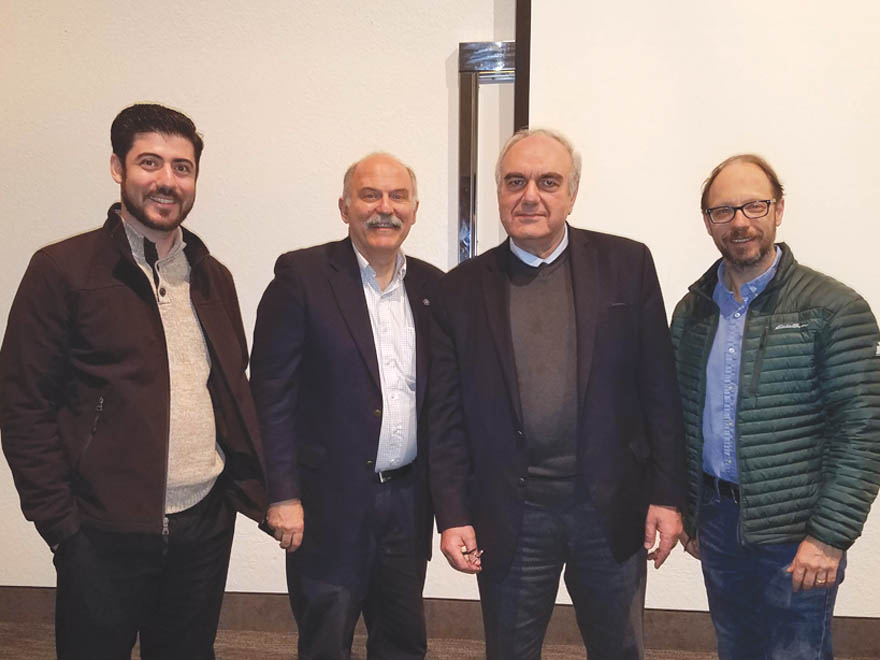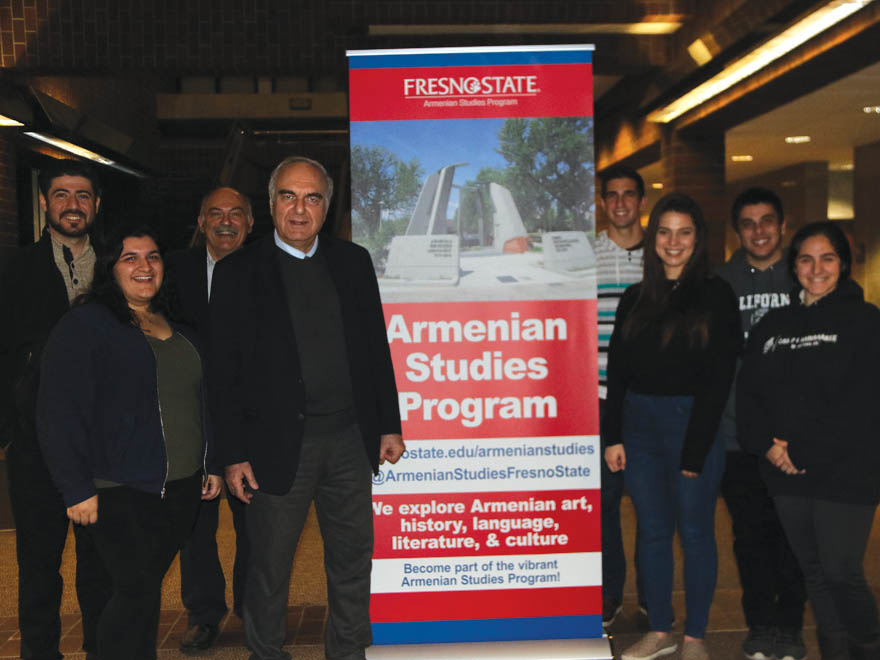Gregory Krikorian
Staff Writer

Armenians and Germans have had strong cultural relations throughout the years and even to this day. There is evidence that Christian Armenian missionaries traveled to what is today Germany in the 4th c. There is also documentation about the relations between Armenians and Germans that dates to the time of the Crusades in the 11th century. Later, German travelers often visited Armenia, and Armenian intellectuals often received their education in Germany.
These and many other examples of German Armenian interactions were discussed at a lecture by Dr. Levon Chookaszian on Friday, February 1. Dr. Chookaszian shared this information with the audience at the presentation titled “Germans and Armenians: Historic and Artistic Relations,” organized by the Armenian Studies Program at Fresno State.
Dr. Chookaszian is one of the leading authorities in the world on Armenian Art. He has taught at Yerevan State University since 1978 and is the founder of the Department of Art History at Yerevan State. In 1996, he also established the UNESCO Chair of Armenian Art History. Dr. Chookaszian imparted a great deal of knowledge with his audience. It was great to understand how well the Germans and Armenians were able to have such strong relations. Dr. Chookaszian illustrated his talk with a PowerPoint presentation.
Listening to Dr. Chookaszian’s talk brought a completely new understanding of what the Germans and Armenians were able to bring to each other’s lives. There were a number of influential figures who made an important impact on the mutual relations. Johann Jacob Friedrich Wilhelm Parrot was a German naturalist and professor who climbed Mt. Ararat in 1829. According to the Bible, Mt. Ararat is the place where Noah’s Ark landed. Parrot, accompanied by noted Eastern Armenian author Khachatur Abovian, is considered to the be the first to have climbed the mountain in modern times.
In the field of art, Dr. Chookaszian presented the example of Albrecht Dürer, the noted 15-16th c. German painter and wood-cut artist, whose influence on Armenian art was substantial. When the Armenians began to publish the first books in Armenian in the 16th c., they used Dürer’s wood-cuts as models for their illustrations and these became widely distributed among Armenian printers. Dr. Chookaszian also suggested that the well-known Armenian painter Minas Avetsiyan was also influenced by Dürer, comparing an Avetisyan self-portrait where he is seen holding a spring of thorns, to a similar painting by Dürer.

Dr. Chookaszian provided other examples of how Armenians and Germans were able to work together. Avetik Isahakian, the noted Armenian poet, writer, and public figure studied at the University of Leipzig as well as the University of Zurich. Isahakian, with the help of a number of German intellectuals, founded the German-Armenian Society in 1914, one year before the Genocide. The main reason for the founding of this group was to keep a mutual understanding between the two groups. Isahakian also edited “Mesrop,” the journal of the Society.
Another important contributor to the German-Armenian Society was its first chairman, Johannes Lepsius, a German Protestant missionary. Lepsius had a special interest in the Armenians, and reported extensively about the Armenian Genocide.
This year marks the 150th anniversary of the birth of the Armenian composer Gomidas, the founder of modern Armenian music. Gomidas studied in Berlin and used his western musical training to transform Armenian music. He spent many years in Germany often lecturing about the history and significance of Armenian music.
The audience enjoyed the lecture presented by Dr. Chookaszian on a topic that has been little discussed. This presentation allowed one to gain a new respect for the Germans. The Germans and Armenians have had a long history of interaction and still share a connection to this day.
Dr. Chookaszian’s lecture detailed the scholars, artists, and influential characters that made an impact on German and Armenian relations.
Dr. Chookaszian’s presentation on “Germans and Armenians: Historic and Artistic Relations,” was eye-opening for those in attendance.
 Hye Sharzhoom Armenian Action
Hye Sharzhoom Armenian Action